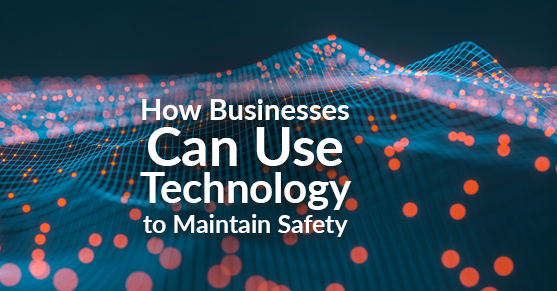Resiliency in the face of COVID-19 is reliant on employee safety. As many companies transition a portion of their staff to home offices, their onsite workers can’t enjoy the same luxury.
For several industries returning to work — such as manufacturers, food processors, product distributors — they need onsite workers for production and quality assurance, increasing the risk of spreading the virus.
The risks of returning to work
Whether you’re heading back to the office or manufacturing environments, you run the risk of exposing your employees to the virus, which has multiple implications for employee safety. If one employee tests positive, there’s a litany of procedures prescribed by the CDC and OSHA that halt various operations.
Not only should the infected employee be sent home (or into the care of medical professionals), but their work station needs to be closed off and disinfected after 24 hours (or as long as you possibly can). Additionally, the company needs to collect detailed information on all internal contact with co-workers, screen them, and send them home if they’re showing any signs of infection. Unfortunately, within a production environment, these parameters and interactions are hard to define.
In some cases, entire factories have shut down after employees tested positive or died. The road to disinfecting a whole facility is a long and challenging road accompanied by massive declines in production and revenue. There’s also the adverse effect of having your company’s reputation scrutinized for bringing workers back only to halt production because they became infected.
As the number of cases continues to fluctuate — some lower here, but some higher there — it’s hard to pin down a time when things will settle. And although the risks are daunting, there are ways your organization can get ahead of the curve with the right technology and welcome your staff back into a safe, well-monitored work environment for the duration of the pandemic.
Technology for onsite employee safety
Providing hand sanitizer wherever employees congregate is a nice touch, but implementing new systems and protocols is essential for preventing the spread of this virus. With the right solutions, you can alleviate the stress of returning to work before your staff even walks in the door.
Thermal Imaging
HIPAA-compliant thermal imaging is an excellent tool for companies to use in the battle against COVID-19. Whether they’re walking into the building, standing at their workstation, or leaving at the end of their shift, thermal imaging provides fever detection across the board, from production staff to management. When someone’s temperature spikes, the system immediately sends out an alert and records the incident in a log.
PPE Screening
As we all know, appropriate PPE is needed wherever we are. However, one of the trickiest things to do is guaranteeing everyone is wearing their protective gear when they’re in populated areas. With PPE monitoring technology, companies combat that barrier by recording and screening employees the entire time they’re on the premises. Again, when the system detects an employee isn’t wearing their PPE, a notification is sent out, recorded in the log, and supervisors can intervene to provide the correct PPE.
Contact Tracing
All of these funnel into one of the most important tools for minimizing the spread of the virus within your organization: contact tracing. When an employee tests positive for COVID-19, we can retrace their steps, see who they came in contact with, where they were, for how long, and the amount of PPE they were wearing. Whomever they interacted with, they’ll be notified, screened, tested, and their interactions will be analyzed as well.
Maintaining physical distance can also be monitored via on-person proximity devices. When co-workers come within 6 ft. of one another, the device alerts them and relays the message back to the logging system.
The data from each monitoring device is collected in one depository, allocated per employee ID, and actively reported. If a staff member becomes infected, tracking down where they’ve been and who they’ve been in contact with will be easily visible for supervisors to proceed with the necessary procedures.
Safe technology provides our employees with the comfort of knowing they can work and that they’ll be protected while they do. At XTIVIA, we’re partnering with SoftwareAG to provide solutions to businesses needing that extra level of employee safety. Through our partnership, we’ll deliver thermal imaging and PPE/proximity detection technology with multi-location reporting, visual analytics, and more for maintaining safe conditions in any work environment. To learn more about our offerings, we invite you to explore our worker health and safety solutions.
Right now, being safe isn’t just a way to keep our businesses afloat, but a way to uphold our duty of minimizing the spread of COVID-19. Whether you’re implementing new software to permit employees to work from home or to monitor employees in their workplace, technology is the key to keeping your teams safe now and in the future.
This post was originally published here.

